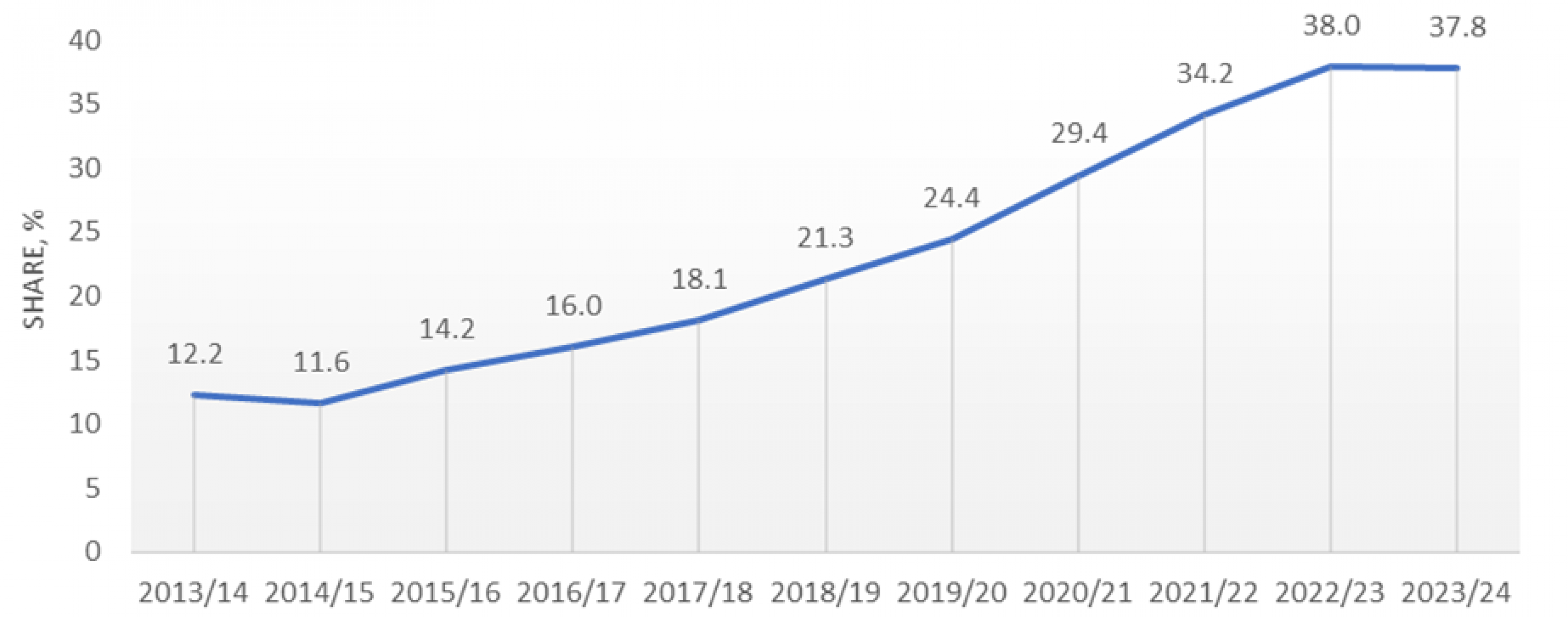On this page:
Our renewable energy targets
Victoria's renewable energy targets legislated in the Renewable Energy (Jobs and Investment) Act 2017 (Vic) are:
- 25% by 2020 (achieved)
- 40% by 2025
- 65% by 2030
- 95% by 2035
These targets include offshore wind energy generation targets of:
- at least 2 gigawatts (GW) of offshore generation capacity by 2032
- 4 GW by 2035
- 9 GW by 2040.
Our energy storage targets
Victoria’s legislated energy storage targets are:
- at least 2.6 GW of energy storage capacity by 2030
- at least 6.3 GW by 2035.
The energy storage targets will include short, medium and long duration energy storage systems, allowing energy to be moved around during the day to meet demand and to be supplied through longer duration imbalances.
Short and medium duration storage (< 8 hours) will include grid-scale batteries and household batteries that are aggregated to operate as virtual power plants. Long duration storage (> 8 hours) may include for example pumped hydroelectricity generation, long-duration battery systems and other emerging technologies like compressed air storage and molten salts.
Non-aggregated household batteries provide flexibility to store excess energy generated, allowing the property owner to then utilise it in the evening or when the sun is not shining. However, these systems are not set up to dispatch energy or services to the National Electricity Market and therefore they will not contribute to the energy storage targets.
The firm capacity delivered by Victoria’s energy storage targets will provide reliable, affordable and clean energy as Victoria’s ageing and increasingly unreliable coal generation is replaced with new renewable energy.
Our 2030 and 2035 renewable energy and energy storage targets were legislated in March 2024.
Meeting our renewable energy and energy storage targets will:
- deliver around $9.5 billion (in net present value terms) and around 59,000 two-year jobs to Victoria’s economy over the period from 2023 to 2035
- support the reliability of Victoria’s electricity supply
- put downward pressure on electricity prices
- reduce Victoria’s emissions from electricity generation from around 41 million tonnes of carbon dioxide equivalent (Mt of CO2e) in 2021 to around 23 Mt of CO2e in 2030 and 3 Mt of CO2e in 2035.
These targets were developed in 2022 based on energy market modelling undertaken for DEECA by Jacobs and economic impacts modelling carried out by PwC.
VRET progress reports
The VRET progress reports show how we are progressing towards our renewable energy, storage and offshore wind targets.
For 2024/25, renewable energy was 42.4% of Victoria’s electricity generation – and we’ve closed out the financial year with a strong pipeline of projects that puts Victoria well placed to achieve our 40% renewable electricity generation target by the end of 2025.
Figure 2: Victorian renewable electricity generation share, 2013/14 to 2024/25


Our high level of renewable electricity generation during 2024/25 and the strong pipeline of renewable energy and energy storage projects under construction or undergoing commissioning, combined with continuing strong investment in rooftop PV systems, has Victoria well placed to achieve its 2025 target of 40% renewable electricity generation at the end of the year and tracking well towards its 2030 energy storage target of at least 2.6 GW.
Cheaper, Cleaner, Renewable: Our Plan for Victoria's Electricity Future outlines the actions we are taking to ensure our state achieves its renewable energy and storage targets.
Read this year’s report:
Read the historical reports:
Victorian Renewable Energy Target auctions VRET1 and VRET2
The Victorian Renewable Energy Target auctions VRET1 and VRET2 help us meet our renewable energy targets by providing long-term contracts that create investment certainty to build new energy generation projects.
Ensuring benefits for host communities
It is important that renewable energy developments deliver benefits for host communities.
VicGrid and the Department of Energy, Environment and Climate Action are developing draft guidelines setting expectations for how renewable energy and transmission project developers will be expected to engage with and deliver social value and economic benefits to landholders, Traditional Owners and communities. Read the draft guidelines at Engage Vic.
Page last updated: 11/11/25
